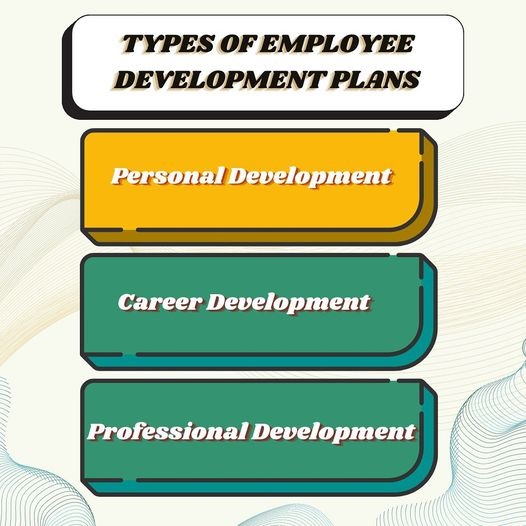Discover how to empower your team members and drive organizational growth with an effective employee development plan (EDP).
In today’s competitive business landscape, organizations that prioritize employee development are poised to achieve long-term success. By investing in your people, you not only enhance their skills and knowledge but also foster a positive company culture, boost employee morale, and improve overall productivity. An employee development plan (EDP) serves as a strategic roadmap to guide this journey.
|
Author: Jonathan M. Pham |
Highlights
- An Employment Development Plan (EDP) is a personalized roadmap that outlines goals, action steps, timelines, resources, and evaluation methods to help an employee develop their skills and advance within an organization. Not only does it benefit the individual, but it also contributes to improving organizational performance, increasing retention and engagement, attracting top talent, and driving business growth.
- EDPs can be categorized based on their focus (personal, career, professional), timeframe (short-term, long-term), skill gap, objective, performance, or responsibility (leadership, team).
- The process of writing an EDP requires conducting a needs analysis, setting goals, developing action steps, sourcing experts and resources, creating a timeline, allocating resources, and reviewing and monitoring progress. During this process, one needs to take into account factors such as personalization, holistic development, transparency, coaching, leadership development, and a supportive culture.
What is an Employment Development Plan?
An Employment Development Plan (EDP) is a personalized roadmap designed to aid an employee in growing their skills and advancing within an organization. It outlines specific goals, competencies to be worked on, and actions/ resources necessary to achieve these objectives within specific timelines.
An EDP typically includes the following key components:
- Short and long-term goals: These outline the desired outcomes, such as acquiring new skills, landing a promotion, or developing leadership abilities. Short-term objectives serve as stepping stones to larger ones.
- Action steps: The specific tasks one needs to take to visualize these objectives. For example, if the goal is to improve communication skills, action steps might include attending a communication workshop or practicing active listening.
- Timeline: Including deadlines for completing each step. A timeline helps ensure accountability and progress tracking.
- Resources: Any necessary support, training, or tools to aid one in the process (e.g. online courses, mentorships, or access to company facilities) – plus the associated budget.
- Evaluation methods: This outlines how progress will be measured and feedback provided. Regular check-ins and performance reviews are helpful for assessing progress and making adjustments as needed.
Additional components:
- Skills assessment: This should help identify areas which one needs to work on.
- Career path: A potential roadmap for career progression within the organization.
- Mentorship or coaching: Guidance and support from a more experienced employee or a professional coach.
- Performance feedback: Regular input on one’s progress.
- etc.

Employee growth plan
Benefits of an Employee Development Plan
Employee Development Plans (EDPs) are essential for organizations that want to create a positive and productive work environment, attract and retain top talent, and drive business growth. By investing in their staff’s growth, companies reap the rewards of a highly skilled and engaged workforce.
For employees
- Skill development
As employees acquire new skills and knowledge, their performance soar up, making them more valuable to the organization. At the same time, it also contributes to enhancing their confidence and self-esteem.
- Career advancement
By setting clear goals and providing a roadmap for the future, EDPs serve as an invaluable tool for people to advance their careers within the company.
- Increased job satisfaction
Those who feel invested in their growth and development are more likely to be satisfied with their jobs.
For organizations
- Improved performance
Team members with enhanced competencies are better equipped to perform their jobs effectively, leading to increased productivity and overall performance.
- Increased retention & engagement
According to LinkedIn Learning, there is a strong correlation between staff development initiatives and higher retention, engagement, and productivity. When employees feel valued and supported in their development, they are less likely to seek opportunities elsewhere. Organizations that invest in customized learning and development programs are likely to experience a high level of satisfaction, as highlighted by SHRM’s research.
On the other hand, EDPs also play a role in fostering a positive work environment where individuals feel connected and motivated. Deloitte’s research underscores the role of L&D in enhancing employee well-being and engagement. Continuous learning opportunities give people a reason to stay motivated and productive.
As pointed out in a study by McKinsey and one by Korn Ferry, a strong commitment to staff growth turns an organization into a talent magnet – it gives them an edge in attracting and retaining top employees in today’s competitive job market.
- Business growth
Investing in employee development lays the foundation for building a skilled workforce capable of driving innovation and growth. During this process, organizations may identify and develop potential leaders, ensuring a smooth transition of responsibilities.

Staff development plan
Who Needs an Employee Development Plan?
An EDP is beneficial for a wide range of employees, regardless of their role or performance level:
- New employees: During the onboarding process, an EDP enables one to acclimate to their roles, understand company expectations, and develop the competencies needed to succeed.
- Underperforming employees: For those who are struggling to meet expectations, an EDP provides a structured plan to address performance issues and improve their skills.
- High-potential members: An EDP is an amazing tool for identifying and developing high-potential individuals who have the potential to become future leaders within the organization.
- Managers: Managers can benefit from EDPs to improve their leadership skills, grow their teams, and enhance their overall effectiveness.
- Those seeking career advancement: EDPs may aid one in mapping out their career goals, working on the necessary competencies, and creating a roadmap for advancement.

Types of Employee Development Plans
Employee Development Plans can be categorized based on various factors, such as their focus, time frame, or the specific needs of an individual:
Based on focus:
- Personal development plan: Addressing the employee’s overall growth and well-being, including areas like work-life balance, stress management, and personal goals.
- Career development plan: Specifically designed to help one advance within the organization or industry. It often involves goals related to promotions, new responsibilities, and skill development.
- Professional development plan: Focusing on specific skills or knowledge required for one’s current role or future aspirations. It might include technical training, certification programs, or mentorship.

Based on timeframe:
- Short-term: Addressing immediate goals that can be achieved within a few months. Typically involving tasks like completing a specific project or acquiring a new skill.
- Long-term: Outlining goals that may take several years to achieve, such as obtaining a higher degree or moving into a senior leadership role.
Based on skill gap:
- Skill-based plan: Designed to address specific skill gaps (identified through performance reviews or assessments) through training programs, workshops, or on-the-job learning opportunities.
Based on objective:
- Goal-oriented plan: Focused on hitting specific targets, such as increasing sales, improving customer satisfaction, or reducing costs.
Based on performance:
- Performance improvement plan: Typically created for those who are underperforming.
Based on responsibility:
- Leadership development plan: Developed to prepare one for leadership roles through mentoring, coaching, or participation in other specialized programs.
- Team development plan: Improving the skills and collaboration of a specific team.
It’s important to note that these categories are not mutually exclusive; EDPs often incorporate elements from multiple types.
Simple Employee Development Plan: Sample Templates
- Personal development plan template
| Component | Detail |
| Employee Name |
[Employee’s Name]
|
| Review Date | [Date] |
| Goals |
* [Goal 1] * [Goal 2]
|
| Action Steps |
* [Action Step 1] * [Action Step 2]
|
| Timeline |
* [Deadline for Action Step 1] * [Deadline for Action Step 2]
|
| Resources |
* [Training, tools, or mentors needed]
|
| Evaluation Methods |
* [How progress will be measured]
|
- Career development plan example
| Component | Detail |
| Employee Name |
[Employee’s Name]
|
| Review Date | [Date] |
| Career Goals |
* [Desired position or role] * [Skill development areas]
|
| Action Steps |
* [Networking activities] * [Training courses] * [Project involvement]
|
| Timeline |
* [Deadlines for each action step]
|
| Resources |
* [Mentors, company resources, external resources]
|
| Evaluation Methods |
* [Performance reviews, feedback from managers]
|
- Sample performance improvement plan
| Component | Detail |
| Employee Name |
[Employee’s Name]
|
| Review Date | [Date] |
| Performance Issues |
* [Specific areas of concern]
|
| Goals |
* [Improved performance objectives]
|
| Action Steps |
* [Steps to address performance issues]
|
| Timeline |
* [Deadlines for improvement]
|
| Resources |
* [Training, coaching, additional support]
|
| Evaluation Methods |
* [Regular performance reviews, progress tracking]
|
More detailed plan templates can be found for free here!

Employee development plan ideas & format
Steps to Writing an Employee Development Plan
-
Conduct a needs analysis
The first step in creating an effective Employee Development Plan (EDP) is to conduct a thorough training needs analysis. This involves assessing one’s current skills, identifying areas for improvement, and aligning their development goals with the organization’s overall objectives.
To begin, try to pinpoint the employee’s strengths and weaknesses through performance reviews, 360-degree feedback, or one-on-one conversations. Pay close attention to areas where the employee excels and ones where they may struggle. Additionally, consider any specific feedback or concerns that have been raised by supervisors or colleagues.
Next, define the employee’s career aspirations and short-term objectives. This will help ensure that the EDP is aligned with their personal and professional objectives. Discuss their ideal role within the organization and any specific skills or knowledge they would like to acquire.
Example:
Employee: John Smiths
Position: Customer Service Representative
Current Skills and Strengths:
- Strong communication skills, both verbal and written
- Ability to resolve customer complaints effectively
- Demonstrates empathy and understanding when dealing with customers
Areas for Improvement:
- Technical knowledge of the company’s products and services
- Time management skills, particularly when handling multiple tasks simultaneously
- Confidence in upselling products and services
Career Aspirations:
- Advance to a Team Lead position within the next 2 years
- Develop expertise in customer relationship management (CRM) software
- Improve technical knowledge of the company’s products
Alignment with Organizational Objectives:
John’s development goals align with the company’s overall strategy to enhance customer satisfaction and increase sales. By improving his technical knowledge and upselling skills, he can contribute more effectively to the organization’s success.
Based on this analysis, the EDP could focus on the following areas:
- Technical training: Provide John with training on the company’s products, services, and CRM software.
- Time management workshops: Offer workshops or coaching sessions to help John improve his time management skills.
- Sales training: Provide sales training to enhance John’s ability to upsell products and services effectively.
- Mentorship or coaching: Assign a mentor or coach to provide guidance and support as John progresses in his career.
-
Set goals
Once you’ve completed the needs analysis, the next step is to define clear and achievable targets for the employee’s development. Ensure alignment between the individual’s aspirations and the organization’s overall objectives.
When setting goals, it’s important to follow the SMART framework:
- Specific: Clearly define what you want to achieve.
- Measurable: Set quantifiable targets that can be tracked and measured.
- Achievable: Ensure that they are realistic and attainable given the employee’s current competencies and resources.
- Relevant: Make sure the goals are aligned with the individual’s vision and the organization’s needs.
- Time-bound: Set specific deadlines for achieving each item.
Prioritize the objectives based on their importance and the employee’s development needs. Focus on the most critical ones first, but don’t forget to consider their motivation and interest.
Example:
Based on the needs analysis, John Smiths’ goals could be:
Short-Term Goals (within 6 months)
- Technical Proficiency: Achieve a passing score on the company’s product knowledge certification exam.
- Time Management: Reduce the number of customer complaints related to late responses or missed deadlines by 20%.
- Sales Skills: Increase average sales per customer by 10%.
Long-Term Goals (within 12 months)
- Career Advancement: Successfully complete the company’s Leadership Development Program.
- CRM Proficiency: Become proficient in using the company’s CRM software to track customer interactions and sales opportunities.
- Mentorship: Mentor at least one new customer service representative.
-
Develop action steps
To come up with steps that are clear, concise, and directly related to the goals, one should:
- Identify the specific tasks that need to be completed to achieve each goal. Break down larger goals into smaller, more manageable milestones.
- Assign responsibilities for each task. Determine who will be responsible for completing it, whether it’s the employee themselves or someone else within the organization.
- Establish clear deadlines to ensure that the plan stays on track. Consider the complexity of the task and the availability of resources when setting timelines.
Example of developing action steps for John Smiths’ EDP:
Goal: Achieve a passing score on the company’s product knowledge certification exam (Short-Term)
- Study the company’s product manuals and training materials for at least 2 hours per week.
- Take practice exams and review the answers to identify areas of weakness.
- Schedule a mock exam with a colleague or supervisor to simulate the testing environment.
- Attend any available product training sessions or webinars.
Goal: Reduce the number of customer complaints related to late responses or missed deadlines by 20% (Short-Term)
- Implement a time management system (e.g., a to-do list, time tracking app) to prioritize tasks and manage workload effectively.
- Attend a time management workshop or coaching session.
- Practice delegation and ask for help when necessary.
- Regularly review and adjust the time management system to ensure its effectiveness.
Goal: Increase average sales per customer by 10% (Short-Term)
- Attend a sales training course or workshop.
- Practice upselling techniques with a colleague or supervisor.
- Analyze customer data to identify cross-selling opportunities.
- Attend sales team meetings to share best practices and learn from others.
-
Source experts and resources
When it comes to staff development, there are a lot of resources one may take into account:
- Coaches and mentors can provide guidance, support, and accountability. Consider finding one who has experience in the area in which the person wants to improve.
- Training providers typically offer a variety of training programs and workshops designed for participants to acquire new skills and knowledge. Research different options to find the best fit for the employee’s needs and budget.
- Don’t forget about internal experts too. Look for experienced employees within the organization capable of offering advice or mentorship.
- Company resources (e.g. internal libraries, databases, or online learning platforms) are also amazing.
-
Create a timeline
A detailed timeline will ensure that the plan stays on track and deadlines are met. Assign specific dates for each of the various activities and tasks outlined in the action steps. Set milestones (which can be either specific achievements or deadlines) throughout the timeline, and be prepared to make adjustments as needed. Unexpected challenges or opportunities may arise, so it’s important to be able to adapt the roadmap accordingly.
-
Allocate resources
When allocating resources for an EDP, consider the financial implications of the proposed actions:
- Training costs: Determine the budget for external training programs, workshops, or certifications. Think about factors such as the cost of registration fees, travel expenses, and accommodation.
- Equipment expenses: If the development plan requires specific tools, estimate the costs associated with purchasing or renting them.
- Time commitment: While not a direct financial cost, the time investment required for the employee to attend training sessions, complete assignments, or participate in development activities can impact productivity and potentially require adjustments to workload or staffing.
Once you’ve estimated the costs involved, make sure to allocate resources effectively by:
- Prioritizing goals: If the budget is limited, start with objectives that have the greatest impact on the staff’s growth and the organization’s objectives.
- Leveraging internal resources: Whenever possible, try to utilize internal resources to reduce costs (e.g. existing training materials, mentoring programs, or access to company databases or libraries).
- Exploring cost-effective options: Research alternative options that might be more affordable, such as online courses, webinars, or self-paced learning materials.
-
Review and monitor progress
Regular check-ins are essential for ensuring that everything is on track. These meetings provide an opportunity to review progress, offer constructive feedback, and address potential roadblocks.
If the employee is struggling, additional support such as extra training, mentoring, or coaching may be necessary. On the other hand, if they have been doing well, recognizing and celebrating their achievements is crucial for reinforcing positive behavior and motivating them for future development. This might involve:
- Providing sincere praise and recognition for their accomplishments.
- Considering tangible rewards such as bonuses, promotions, or additional development opportunities.
- Sharing their success story with the team or organization to inspire others.

How to write a staff development plan
Tips for Crafting a Good Employee Development Plan
-
Personalization and individualization
A successful EDP is not a one-size-fits-all solution. It must be carefully tailored to the unique needs, goals, and preferences of each individual – so as to foster a sense of ownership, motivation, and engagement.
The needs assessment step is meant to understand one’s current skills, knowledge, and experience, as well as their career aspirations and personal goals. Use this information to identify specific development areas that will help them grow both professionally and personally. For example, if they are interested in moving into a leadership role, you might focus on developing their communication, decision-making, and team-building skills.
Additionally, consider the individual’s learning style. Some people prefer visual aids, while others may benefit from hands-on experience. By understanding their preferences, you can choose activities that are most effective for them. For instance, if one is a visual learner, it is a good idea to provide them with infographics or video tutorials.
-
Holistic development
A truly effective employee development plan should go beyond professional skills and focus on one’s overall well-being. This holistic approach recognizes that personal, interpersonal, and professional growth are interconnected.
By addressing multiple dimensions of development, you can enable your team members to become more rounded individuals and better contributors to the organization. For example, consider incorporating activities that promote emotional intelligence, such as empathy, self-awareness, and effective communication. Additionally, you can support the employee’s physical health by encouraging regular exercise, healthy eating habits, and adequate sleep.
-
Transparency and communication
Maintaining transparency and actively engaging with the employee throughout the process are crucial for leaders and organizations to build trust, foster a sense of ownership, and address any concerns or questions.
When it comes to setting goals, ensure that the employee fully understands the purpose of the plan and the outcomes you hope to achieve. Regularly check in with them to discuss progress, celebrate milestones, and address any challenges they may be facing.
Active listening is also crucial. Take the time to understand their perspective, and be open to feedback and suggestions.
-
Incorporate coaching, mentoring, and training
Coaching, mentoring, and training are vital tools for supporting personal growth. A coach can help one set goals, identify areas for improvement, and develop strategies for overcoming challenges; on the other hand, a mentor can share their own experiences, provide guidance on career paths, and offer support and encouragement.
-
Prioritize leadership development
As stated by the Harvard Business Review, effective staff development initiatives have to go top-down. Managers need to be equipped with skills such as communication, decision-making, team building, and emotional intelligence. These competencies are crucial for leading teams, navigate complex situations, and inspire others.
Additionally, look for individuals who demonstrate strong interpersonal skills, problem-solving abilities, a positive attitude, and a commitment to the organization’s goals. Once you’ve identified potential leaders, provide them with targeted development opportunities (e.g. mentorship programs, leadership training courses, or challenging assignments that allow them to practice their skills in a real-world setting).
-
Promote cross-functional activities and a supportive culture
Cross-functional activities enable team members to acquire a broader understanding of the organization and build relationships with colleagues from different departments. These activities can take many forms, such as team-building exercises, project collaborations, or knowledge-sharing sessions.
By breaking down silos and encouraging teamwork, you can foster a more innovative and collaborative culture, where individuals feel safe, respected, and encouraged to take risks and learn from their mistakes.

Develop a training plan for employees
Read more: Talent Management – Mastering the Basics for Success
Implementation of Employee Development Plan
Once an Employee Development Plan (EDP) is created, the implementation and follow-up phases are crucial for ensuring its success. Here are some key steps to consider:
Implementation:
- Communicate the plan: Clearly communicate the EDP to the employee, ensuring they understand the goals, action steps, timelines, and resources involved.
- Provide resources: Ensure the employee has access to the necessary resources, such as training materials, tools, or mentors, to support their development.
- Set up check-ins: Schedule regular meetings or check-ins to monitor progress, provide feedback, and address any challenges.
- Offer support and guidance: Be available to offer support, guidance, or coaching as needed throughout the implementation process.
Follow-up:
- Track progress: Regularly monitor the employee’s progress against the established goals and timelines.
- Provide input: Offer constructive feedback on the employee’s performance and progress, highlighting both strengths and areas for improvement.
- Address challenges: Work with the employee to identify and address any challenges or obstacles that may arise.
- Make adjustments as needed: Be prepared to make adjustments to the EDP if necessary, based on changes in circumstances or the employee’s progress.
Challenges in Implementing an Employee Development Plan
- Lack of buy-in
Employees may not see the value of the EDP or may resist change.
Solution:
-
- Clearly communicate the benefits of the EDP to employees, emphasizing how it aligns with their career goals and the organization’s objectives.
- Involve employees in the planning process to increase their ownership and commitment.
- Provide incentives or recognition for achieving goals to motivate employees.
- Insufficient follow-up
Lack of follow-up is the main cause of a decline in motivation and progress.
Solution:
-
- Schedule regular check-ins with employees to monitor progress, provide feedback, and address any challenges.
- Leverage technology to automate reminders and track progress.
- Involve managers and supervisors in the follow-up process to ensure accountability.
- Insufficient frequency
If EDPs are not reviewed or updated frequently enough, they may become outdated or irrelevant.
Solution:
-
- Schedule regular reviews of EDPs to ensure they remain aligned with the employee’s goals and the organization’s objectives.
- Encourage employees to proactively request updates or changes to their EDPs.
- Lack of resources
Insufficient resources can hinder the implementation of EDPs.
Solution:
-
- Prioritize EDPs within the organization’s budget.
- Explore cost-effective options, such as online training or internal mentorship programs.
- Leverage existing resources within the organization, such as libraries, databases, or subject matter experts.
- Resistance to change
Employees may resist change or be hesitant to step outside their comfort zones.
Solution:
-
- Provide support and guidance throughout the process.
- Celebrate small wins and milestones to build confidence and momentum.
- Foster a culture of continuous learning and growth.

Create a Customized Employee Development Plan with the Help of ITD World’s Team of Experts
At ITD World, we believe that every employee’s journey is unique. That’s why we’re dedicated to providing tailored development plans that align with your individual goals and aspirations. Our team of experienced experts is here to guide you through the process, ensuring you have the tools and support you need to excel in your career.
How it works:
- Initial assessment: We’ll start by conducting a thorough assessment to understand your current skills, knowledge, and career objectives. This will help us identify areas for growth and development.
- Personalized plan creation: Based on your assessment, our team will work closely with you to create a customized development plan. This plan will outline specific goals, timelines, and strategies to help you achieve your career aspirations.
- Ongoing support: Throughout your development journey, we’ll provide ongoing support and guidance. This includes access to training resources, mentorship opportunities, and regular check-ins to track your progress.
Ready to Take the Next Step?
Contact our team today to discuss your career goals and learn how ITD World can help you create a customized development plan. Together, we’ll work towards a brighter future for both you and your organization!
Other resources you might be interested in:
- Talent Transformation: Build a Future-ready Workforce
- Talent Philosophy: Unlocking Workforce Potential
- Talent Development Playbook: Building Your Future Workforce
- 10 L&D Trends for the Future
- Future Ready Organization: 11 Tips to Building One Capable of Adapting to Industry Trends

